Looking for floorstanding speakers that deliver crystal-clear sound with deep bass but fit perfectly in your living room?
The KEF R7 Meta might just be the speaker you’ve been waiting for.
But is it really worth the hype?
In this review, we’ll dive into what makes the R7 Meta stand out and where it might not be the best fit.
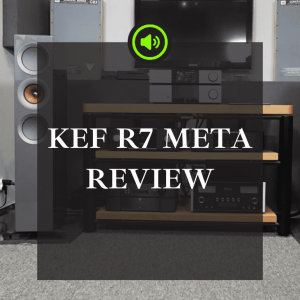
What You’ll Discover in This Review:
✅ How the KEF R7 Meta performs across different music genres
✅ Real-world placement and installation tips to get the best sound
✅ A breakdown of its price versus value, is it a smart investment?
✅ How it compares to other top floorstanding speakers in its class
Ready to find out if the KEF R7 Meta is the right speaker for your home? Let’s get started.
KEF R7 META Specs
Size and Weight: 15.1″D x 12.2″W x 43.7″H / 29.3 kg (64.6 lbs) each
Colors: Black Gloss / White Gloss / Walnut / Titanium Gloss Special Edition
Impedance: 4kΩ
Frequency response range: (±3dB): 48 Hz – 28 kHz
Speaker Maximum Output Power: 400 Watts
Connectivity Technology: Wired
KEF R7 META
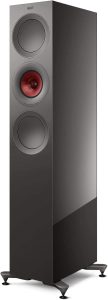
Pros
- Very clear and detailed sound
- High-quality design and finish
- Works with many types of amplifiers
Cons
- Might be too powerful for very small rooms
🔊 DESIGN
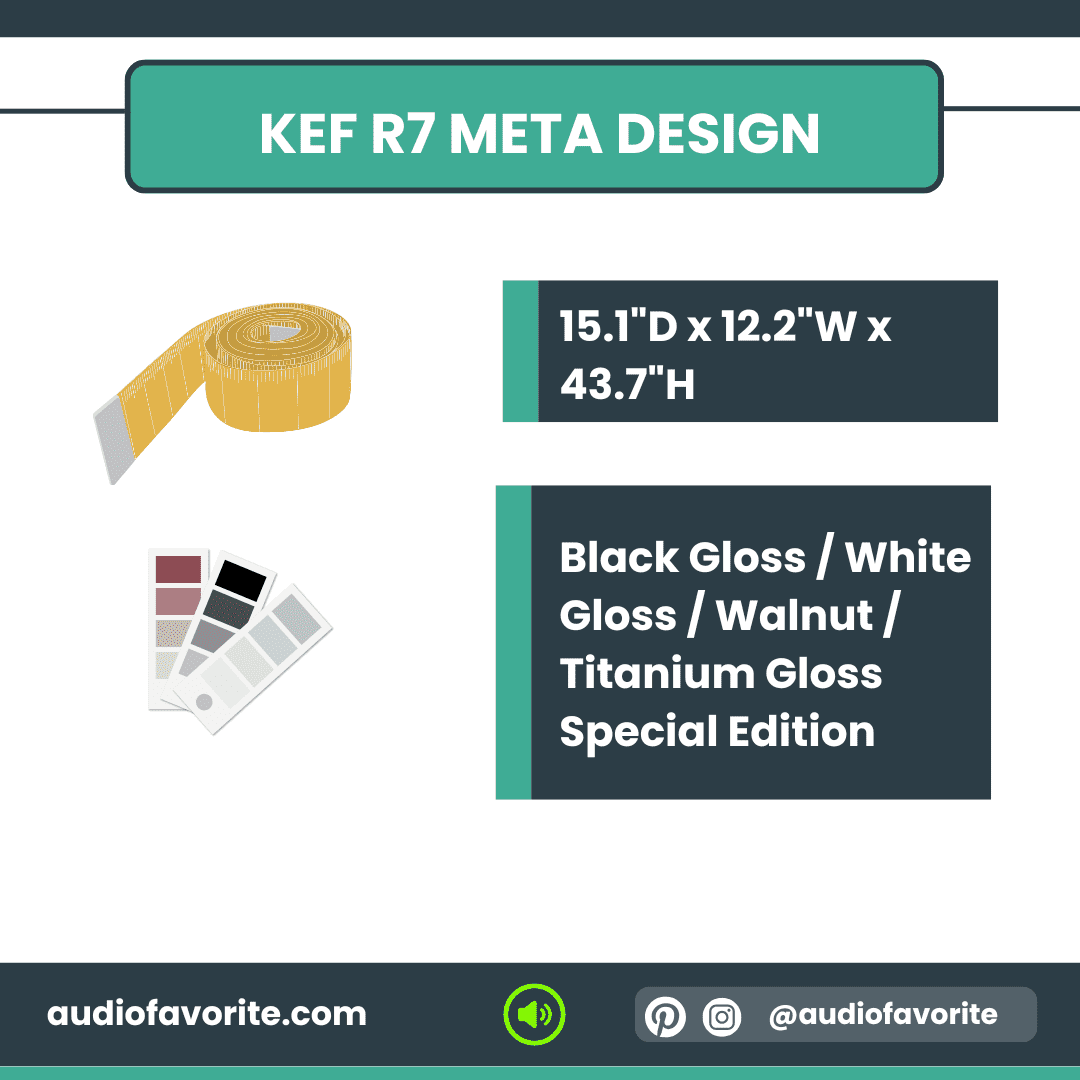
Quick Summary
From the moment I unboxed the KEF R7 Meta, I could tell this speaker was built with care. The design feels premium, and it looks even better in person than in the photos. I chose the Black Gloss, and it’s sleek, modern, and fits right into my living room. It’s not just about looks , the build is solid, the materials feel high-end, and little things like the magnetic grilles and slim footprint show that KEF paid attention to both style and practicality.
My First Impressions
The first thing I noticed when I took the R7 Metas out of the box was how solid and heavy they felt. At nearly 30 kg each, they’re definitely not light, but they’re also not oversized or hard to manage. They stand just under 44 inches tall, and the slim width makes them feel refined, not bulky. Once I had them in place, they looked perfectly at home, they have presence, but they’re not in your face.
I’ve reviewed and owned a few floorstanding speakers over the years, and honestly, this is one of the cleanest, best-balanced designs I’ve seen in this price range.
Finish Options — And Why I Chose Mine
KEF offers the R7 Meta in four finishes. I went with Black Gloss because I wanted something that would disappear into the background during movie nights, but still look sharp during the day. It does both.
That said, I’ve also seen the White Gloss in person, and I’ll admit- it looks great, especially if you use them without the grilles. The red Uni-Q driver adds a cool contrast, and the glossy surface really catches light in a stylish way. Just know that gloss finishes show dust and fingerprints quickly. I find myself wiping them down more often than I did with matte-finished speakers.
The Walnut and Titanium Grey options are more subtle and warm — great choices if you want something that blends with classic or natural interiors.
Details That Matter
A few things stood out to me after living with the speakers for a few weeks:
The magnetic grilles are a nice touch -they pop on and off easily. But here’s the downside: on the white gloss version, the grilles are grey. To me, that looks mismatched. I would’ve preferred white-on-white or even black.
The black gloss, which I’m using, has perfectly matched black grilles, and it’s a much more cohesive look.
KEF clearly thought about placement too. The bass drivers are front-facing, and the port is on the back, which gives you flexibility. I didn’t have to pull these way out into the room to get great bass.
One thing to be aware of – the gloss reflects light. During the day, it’s not a problem. But at night, with the screen on, you do get some light bounce if they’re close to your TV. For me, it’s not distracting, but it’s something to know.
Build Quality
This is a well-built speaker- no question. The cabinet feels dense and quiet to the tap. No hollowness, no rattles. The feet take a little effort to get adjusted evenly, but once they’re set, the speakers sit solidly, and there’s no wobble.
Everything about the construction feels like it was made to last. The finish is flawless, the edges are clean, and even the binding posts on the back feel tight and sturdy.
KEF’s Uni-Q Design – Both Functional and Beautiful
The Uni-Q driver in the center is one of KEF’s signature design elements. It doesn’t just sound good – it looks good too. The red tweeter dome in the middle of the midrange cone gives the speaker a distinct personality. It catches the eye without being flashy. I’ve had a few guests comment on it right away – and that doesn’t usually happen with speakers.
What I like most is that KEF’s design doesn’t feel forced. It’s clean, confident, and purposeful – everything has a function, and it all ties together visually.
My Verdict on Design
If you care about how your speakers look in your room – and I do – the R7 Meta is an excellent choice. It’s sleek, sharp, and built like something in a much higher price range. Sure, the gloss surfaces need some care, and the grille colors aren’t perfect on every version, but those are small issues. What matters more is that these speakers look just as serious as they sound.
👍 What I Like
Beautiful gloss and color options
Feels solid and well-made
Magnetic grilles -easy to use
Slim footprint that works in any room
Eye-catching Uni-Q design without being overdone
👎 What Could Be Better
White model has mismatched grilles
Gloss finishes show dust and reflections
Adjusting the feet takes a bit of patience
🎵 SOUND QUALITY
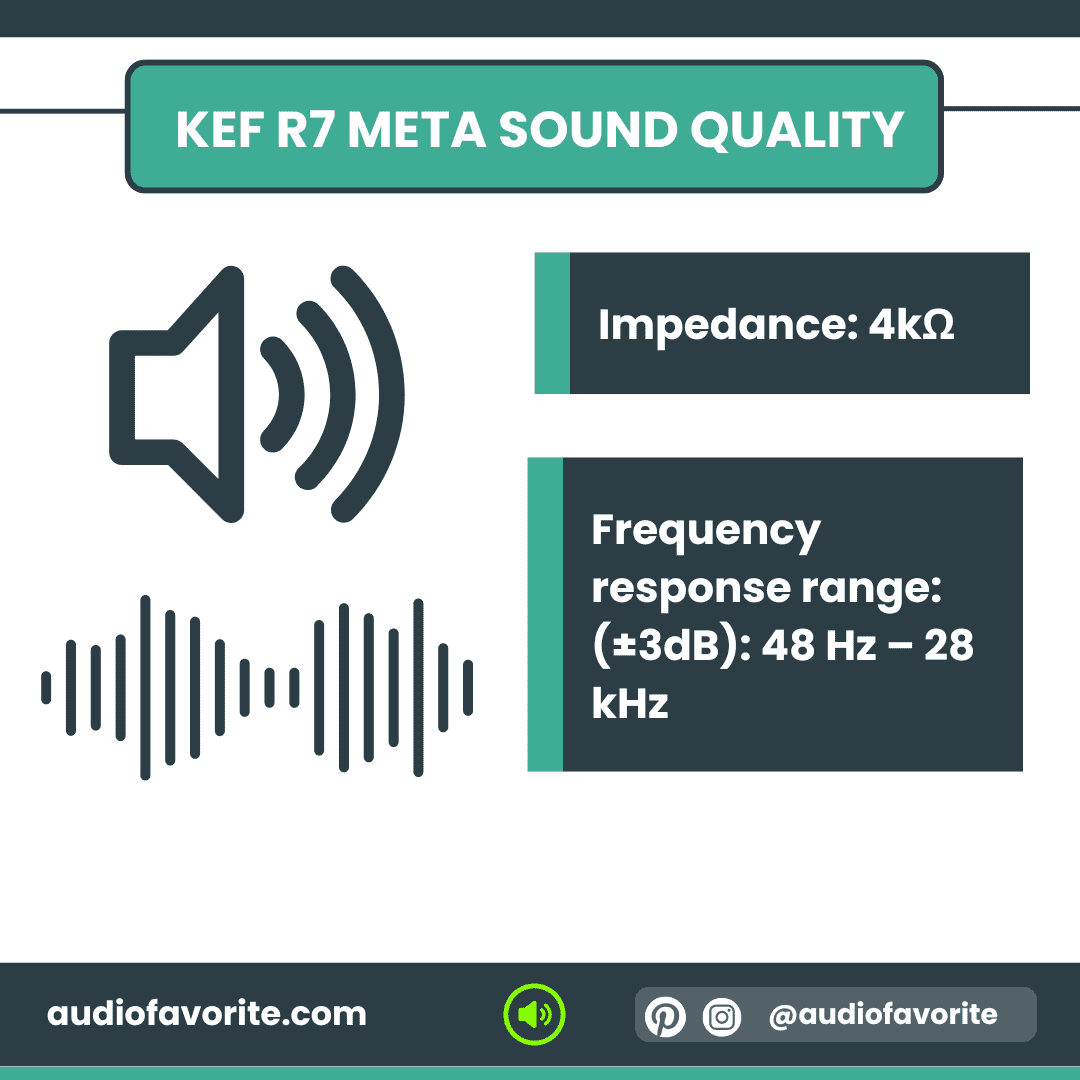
🔊 Bass: Tight, Deep, and Surprisingly Powerful
From the first listen, I could tell the R7 Meta has serious low-end control. The bass isn’t just about boom – it’s tight, fast, and feels very “in control,” even at higher volumes. What really impressed me was how low it could dig without sounding bloated or muddy. KEF claims extension down to 33Hz, and in my room, I’d say that feels accurate – I could feel the bass more than hear it at times.
What stood out is how the bass stays composed, even with bass-heavy tracks or movie explosions. It doesn’t need a subwoofer in most setups unless you’re chasing that cinema-style rumble. For music, especially electronic or anything with punchy drums, the R7 Meta handles low-end dynamics with real authority.
That said, the speaker’s bass will reflect your room. Pulling them away from walls tightens the low-end, while pushing them closer adds more bloom. In my case, a bit of toe-in and a half-meter of breathing room gave me the best balance.
🎤 Mids: Natural, Clear, and Balanced
The midrange is where the R7 Meta really shines -especially with vocals. Whether it was Norah Jones, jazz singers, or classic rock vocals, voices came through with warmth and realism. There’s no artificial push; nothing jumps out or feels recessed. It just sounds right.
I was especially impressed with how clean the mids are. Guitars, pianos, and strings sound very lifelike -with a timbre that feels honest but smooth. Some speakers in this price range add a bit of coloration or warmth to seem more “musical,” but the R7 Meta doesn’t need that trick. It’s transparent without being clinical.
The Uni-Q driver plays a big role here. Since the tweeter and mid are concentric, instruments feel like they’re locked into place with stable imaging. You can hear where things are, not just what they are.
✨ Highs: Detailed Without Fatigue
The treble on the R7 Meta is crystal clear – not harsh, not rolled off, just… correct. Cymbals shimmer, high notes float, and micro-details like finger plucks or reverb trails are easy to pick up. But what’s most important for me: I can listen for hours without feeling fatigued.
There’s a lot of air and spaciousness in the highs, especially on acoustic or ambient recordings. It’s never sharp or exaggerated – it just gives the music room to breathe. Some listeners describe KEF’s sound as “refined,” and I think that fits perfectly here.
At first, I did find the highs slightly restrained, but after some break-in (I’d estimate 100–200 hours), everything opened up nicely. If you’re expecting an exaggerated sparkle or overly bright sound, this isn’t that. It’s more about realism than razzle-dazzle.
🌌 Soundstage & Imaging: Holographic and Expansive
The soundstage is where I really fell for these speakers. With the right recording, the R7 Meta creates a soundfield that just disappears from the room. Instruments float in space, vocals feel like they’re in the room, and there’s real depth – front to back, side to side, even height.
Even in a less-than-perfect room (mine’s square-shaped), I still got solid imaging and a believable stage. The speakers don’t need to be toed in aggressively to “lock in” the image. Thanks to KEF’s wide dispersion, I found that the sweet spot was large – friends sitting off-center still got an immersive experience.
The separation between instruments is another strong point. On busy tracks, everything remains well defined – no congestion, no smearing. Whether it’s a small jazz trio or a full orchestra, the R7 Meta maintains clarity and layering beautifully.
🔈 Volume Performance: Graceful at Any Level
At low volumes, the R7 Meta still keeps its balance. You don’t lose the detail or energy like you do with some less sensitive speakers. I found I could listen late at night without cranking it up and still enjoy the full experience – though it definitely comes alive more as you increase the volume.
At higher volumes, the R7 Meta is rock solid. No compression, no distortion – just more of the same clean, dynamic sound. It can get loud enough to rattle walls, and it does so without strain. With a decent amp (I used a modest NAD and later tried a Fosi monoblock setup), it really opened up.
Just a heads-up: pairing matters. I tried a low-powered tube amp briefly and didn’t love the result – the R7 Meta wants a bit of current to sound its best. With good amplification, though, it performs like a much pricier speaker.
🔄INSTALLATION & PLACEMENT TIPS FOR KEF R7 META
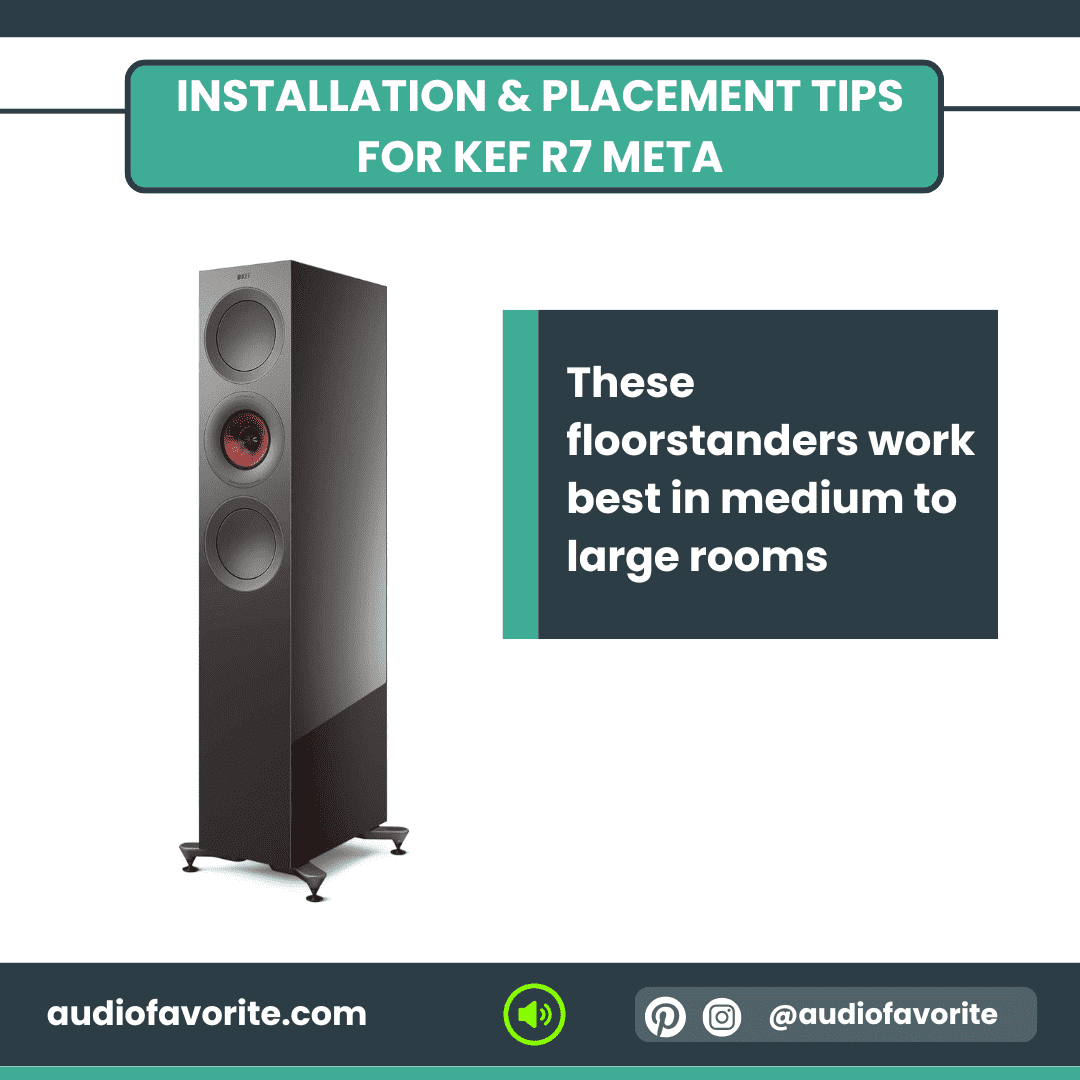
Setting up the KEF R7 Meta is straightforward but benefits greatly from some thoughtful placement. These floorstanders work best in medium to large rooms (think 12×18 feet or bigger). I found that placing them about 30 inches from the rear wall helps keep the bass tight and controlled without boominess.
Give them some breathing room from the side walls-around 6 to 8 feet-to let the Uni-Q driver’s wide sound dispersion work its magic. This means you don’t have to sit perfectly centered to enjoy detailed, natural sound.
A slight toe-in towards your listening spot sharpens imaging and clarity without narrowing the soundstage too much. Also, try using isolation feet like IsoAcoustics Gaia to reduce vibrations and clean up bass response, especially on hard floors.
Pro tip: leave the grilles off for the clearest highs during serious listening sessions. Just be careful if you have kids or pets.
Break-in time matters here-expect about 100 hours for the sound to open up and the bass to tighten. Patience pays off.
The R7 Meta is easy to drive even with modest amps, but pairing it with a stronger amplifier really brings out its full dynamic range.
If you plan to add Atmos speakers later, black finish blends best with common black Atmos modules. Gloss black speakers can reflect light from screens, so avoid placing them directly in front of strong light sources.
Finally, while these speakers deliver solid bass alone, adding a subwoofer can help if you want more powerful low-end impact, especially in bigger rooms.
⚖️Comparison with Competitors
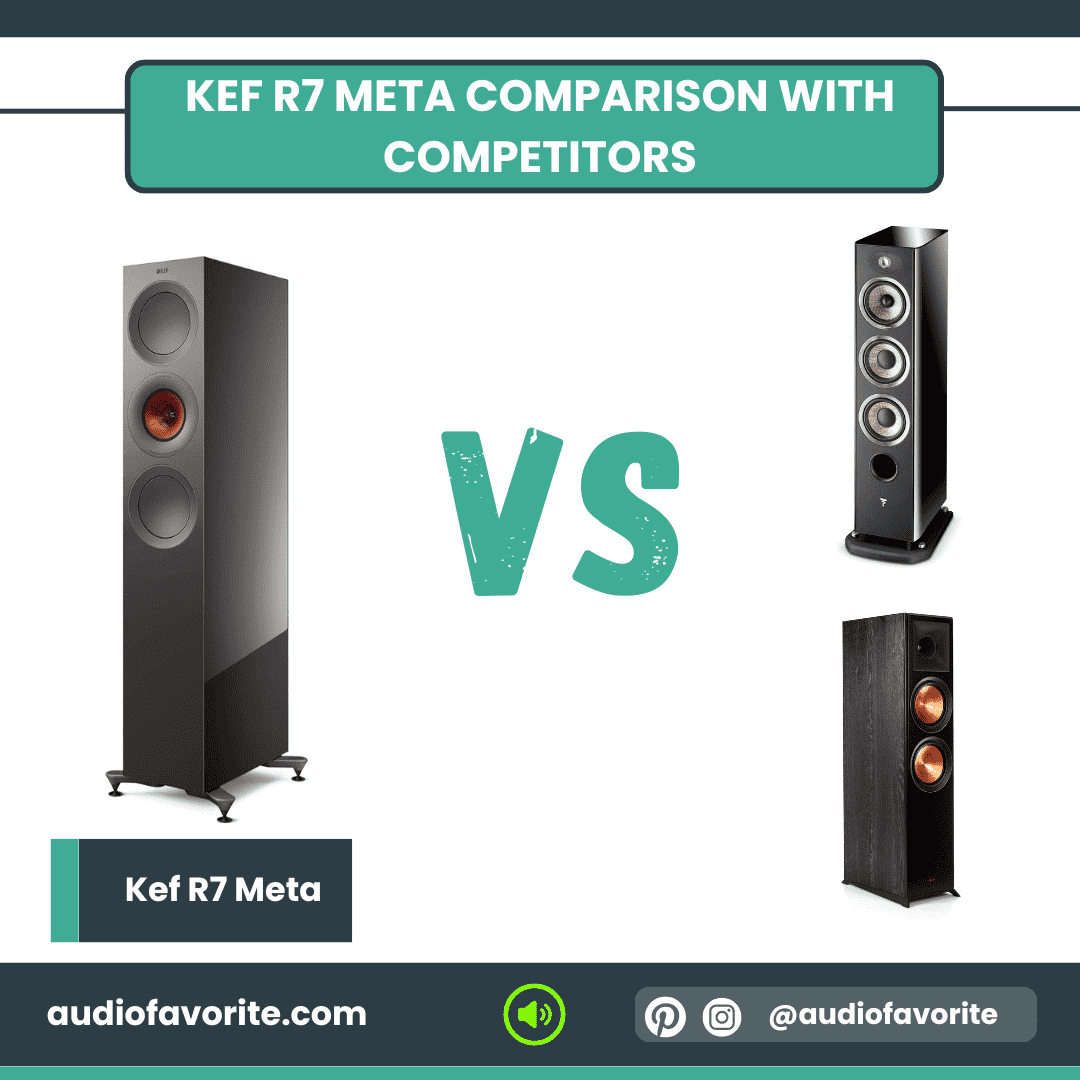
KEF R7 Meta vs Totem Forest Signature
When compared to the Totem Forest Signature, the KEF R7 Meta offers a smoother and more balanced sound profile. While the Totem delivers a fast and dynamic bass, it can sometimes come across as harsh, especially in the highs. The R7’s Uni-Q driver technology ensures a cohesive soundstage and eliminates the narrow “sweet spot,” making it more enjoyable for multiple listeners in the room. Its bass is tight and controlled without needing a subwoofer, which simplifies setup.
KEF R7 Meta vs PMC Twenty5.24
Against the PMC Twenty5.24, the R7 Meta shines with a warmer and more musical midrange that suits a wider variety of genres, including vocals and jazz. The PMC is known for its accuracy but can sound lean or clinical in some cases. Additionally, the R7’s coaxial driver design provides a broader listening area with consistent detail, while the PMC might require a subwoofer to fill out the low end fully.
KEF R7 Meta vs Focal Aria 926
Compared to the Focal Aria 926, the KEF R7 Meta delivers smoother highs with less listener fatigue, thanks to its Meta Material Absorption technology. Although the Focal offers a more revealing treble that can be exciting for critical listeners, it risks becoming tiring over long sessions. The R7’s integration of bass and midrange is more natural, resulting in a focused yet spacious soundstage that performs well at high volumes without becoming boomy.
KEF R7 Meta vs Klipsch RP-8000F
The Klipsch RP-8000F is known for its energetic and bright sound, but this can sometimes be fatiguing. The KEF R7 Meta, in contrast, offers a more refined and natural tonal balance with smoother highs. Its Uni-Q driver allows for superior imaging and a wider sound dispersion, avoiding the hotspot effect typical of many traditional floorstanders. The R7 is also easier to drive with a range of amplifiers, whereas the Klipsch benefits from more powerful amps to control its brightness.
KEF R7 Meta vs DALI Oberon 7
When set against the DALI Oberon 7, the KEF R7 Meta’s cohesive coaxial driver delivers a more unified soundstage and punchier bass response. The DALI’s bass tends to be more laid-back, which may appeal to some, but the R7 provides tighter and faster low frequencies that work well in varied room environments. Both speakers are fairly easy to drive, but the R7’s 4-ohm impedance demands amps capable of stable performance at lower loads.
💰 Price and Value
The KEF R7 Meta isn’t cheap, but you get a lot for your money – great sound clarity, solid build, and advanced tech like the Uni-Q driver. It’s a smart buy if you want quality that works for both music and movies without spending a fortune on high-end gear.
If you want deeper bass, you might need a subwoofer, which adds cost. But overall, the R7 offers strong value for anyone ready to upgrade from basic speakers and wants reliable, natural sound.
Who Should Buy KEF R7 Meta?
If you want a versatile floorstanding speaker that delivers clear, natural sound for both music and movies, the R7 is a great fit. It’s ideal for people who:
Appreciate detailed vocals and balanced mids
Enjoy powerful but controlled bass without always needing a subwoofer
Have a medium to large room and want wide sound coverage
Prefer a speaker that works well with various amps, from solid-state to some tube options
Are patient enough to give it some break-in time to reach full potential
If you’re chasing ultra-fast, super dynamic bass or extremely bright, clinical highs, other brands might suit you better. But for natural, musical sound and a flexible setup, the R7 is a solid choice.
Real World Performance- Testing Across Different Scenarios
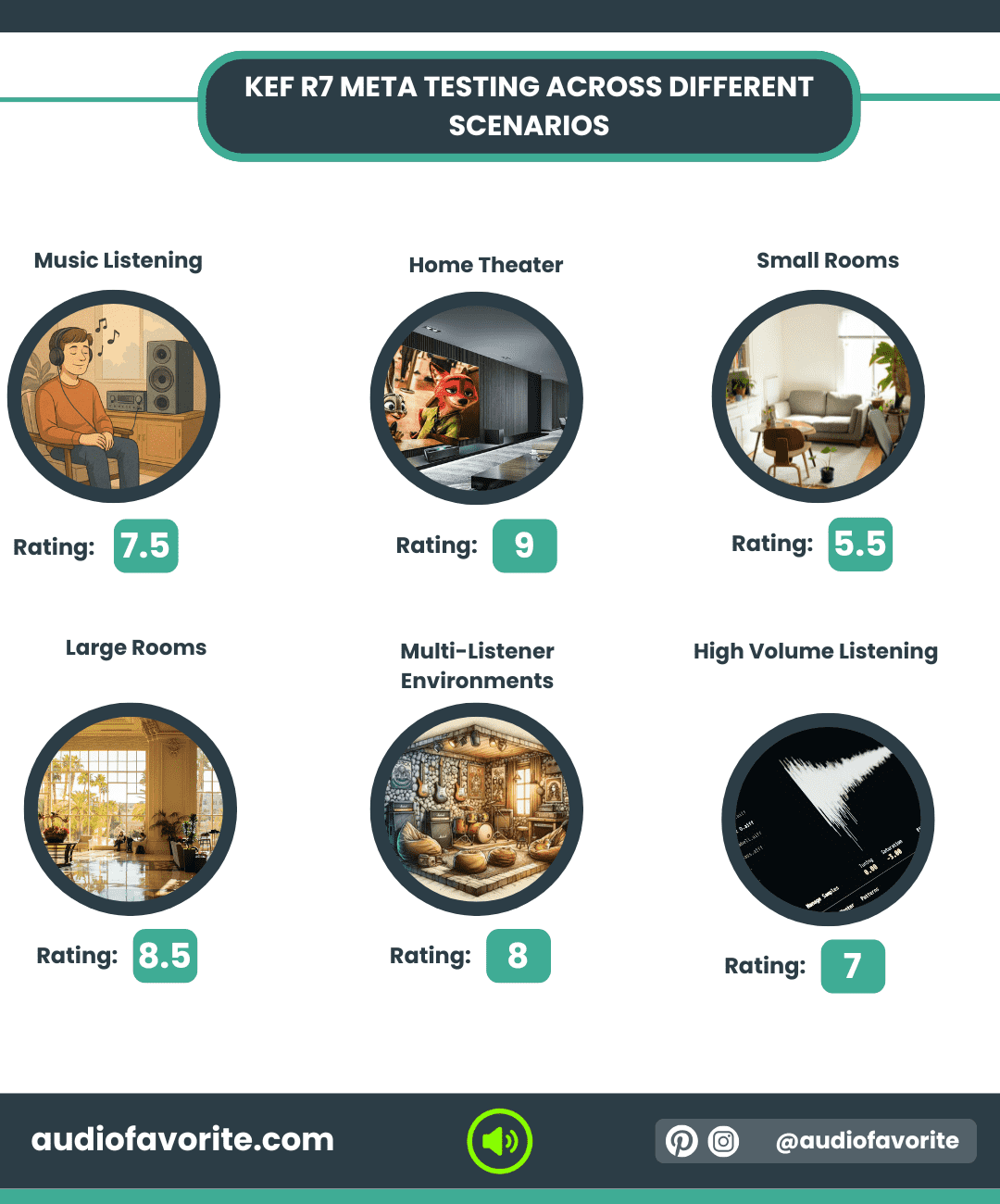
Music Listening (Rating: 7.5/10)
In dedicated listening rooms with moderate size and some acoustic treatment, the R7 Meta shines with detailed mids and clear highs, thanks to its Uni-Q driver. Vocals and instruments come through naturally, making it great for jazz, classical, and acoustic music. However, in untreated or very small rooms, its bass can sometimes feel slightly boomy or uncontrolled without proper placement and break-in time.
Home Theater (Rating: 9/10)
The R7 delivers a dynamic and immersive soundstage for movies, with clean dialogue and impactful effects. Its ability to blend well with subwoofers enhances the low-end impact without overwhelming the midrange. That said, in rooms with reflective surfaces or cramped layouts, some bass bleed and room resonance may reduce clarity, meaning proper placement and room treatment remain crucial.
Small Rooms (Rating: 5.5/10)
While possible, the R7 Meta isn’t ideal for very small rooms under 12m². Its floorstanding design and bass reflex ports require space to breathe. Without this, bass tends to become exaggerated and muddy, impacting overall clarity. If you have limited space, smaller stand-mount speakers or bookshelf options might be a better fit.
Large Rooms (Rating: 8.5/10)
In medium to large rooms (15m² and above), the R7 Meta truly excels. Its broad dispersion pattern ensures even sound distribution, and its powerful bass drivers fill the room without needing a subwoofer in many cases. Users with high ceilings will benefit from pairing it with proper room correction software or treatment to avoid boominess.
Multi-Listener Environments (Rating: 8/10)
Thanks to the Uni-Q coaxial driver, the R7 Meta provides a wide sweet spot. This makes it well-suited for social settings or families where multiple listeners sit around the room. The even sound dispersion means fewer compromises on seating arrangements.
High Volume Listening (Rating: 7/10)
The R7 handles higher volumes well without distortion, making it enjoyable for energetic listening sessions. However, pushing it to extremes in small or untreated rooms can highlight bass issues and listener fatigue in the highs, so moderate volume levels are recommended for optimal sound.
FAQ Section
What makes KEF’s Uni-Q driver technology special?
KEF’s Uni-Q driver technology places the tweeter at the acoustic center of the midrange cone, making both act as a single point source. This design allows sound to disperse more evenly across the room, eliminating the typical “sweet spot” and delivering consistent, natural audio to everyone, no matter where they sit.
Does the KEF R7 Meta require a subwoofer?
The KEF R7 Meta can deliver strong, accurate bass on its own and often does not require a subwoofer, especially in medium to large rooms. However, for those seeking deeper, more dynamic bass in larger or acoustically challenging spaces, pairing the R7 Meta with a powered subwoofer is recommended.
How much power does the KEF R7 Meta need to perform optimally?
The KEF R7 Meta performs best with amplifiers rated between 15 to 250 watts per channel. This wide range means it’s easy to drive with most modern AV receivers or integrated amplifiers, including those with 4-ohm outputs.
What types of rooms are best suited for the KEF R7 Meta?
The KEF R7 Meta excels in medium to large-sized rooms with some space around it to avoid bass distortion. It performs well in both rectangular and moderately shaped rooms but benefits from room treatment or correction software in smaller or square rooms.
How long is the break-in period for the KEF R7 Meta?
The KEF R7 Meta typically requires a break-in period of 40 to 60 hours of moderate listening. During this time, the drivers loosen up, resulting in improved bass response and overall clarity.
Can the KEF R7 Meta be used for both music and home theater?
Yes, the KEF R7 Meta is designed as a versatile floorstanding speaker that performs exceptionally well for both music listening and home theater applications, delivering clear dialogue, detailed mids, and immersive soundscapes.
How I Tested the KEF R7 Meta
I evaluated the KEF R7 Meta in a treated listening room using high-quality amplification and a transparent DAC to ensure the speaker’s performance was heard without added coloration. Speaker placement was carefully optimized to get the best imaging, soundstage, and low-frequency response.
Listening tests included a wide range of genres- classical, jazz, rock, and electronic -sourced from high-resolution FLAC files and streaming services like Qobuz and TIDAL. I focused on clarity, tonal balance, detail retrieval, and dynamics.
For a deeper dive into our comprehensive testing process, check out how we test speakers.
Conclusion
I hope this review helped you learn everything you wanted to know about the KEF R7 Meta and answered all your questions. If you enjoyed this article, be sure to check out our website for many more interesting reads about audio, sound systems, and tech gear. And if you still have any questions or thoughts, don’t hesitate to leave a comment below – we’d love to hear from you!
Disclaimer: “As an Amazon Associate I earn from qualifying purchases.”
Monica Rivas is a Reviewer and Content Manager of Audiofavorite, she is an audiophile for many years and she helps people to learn all they need about audio, speakers, sound etc.
